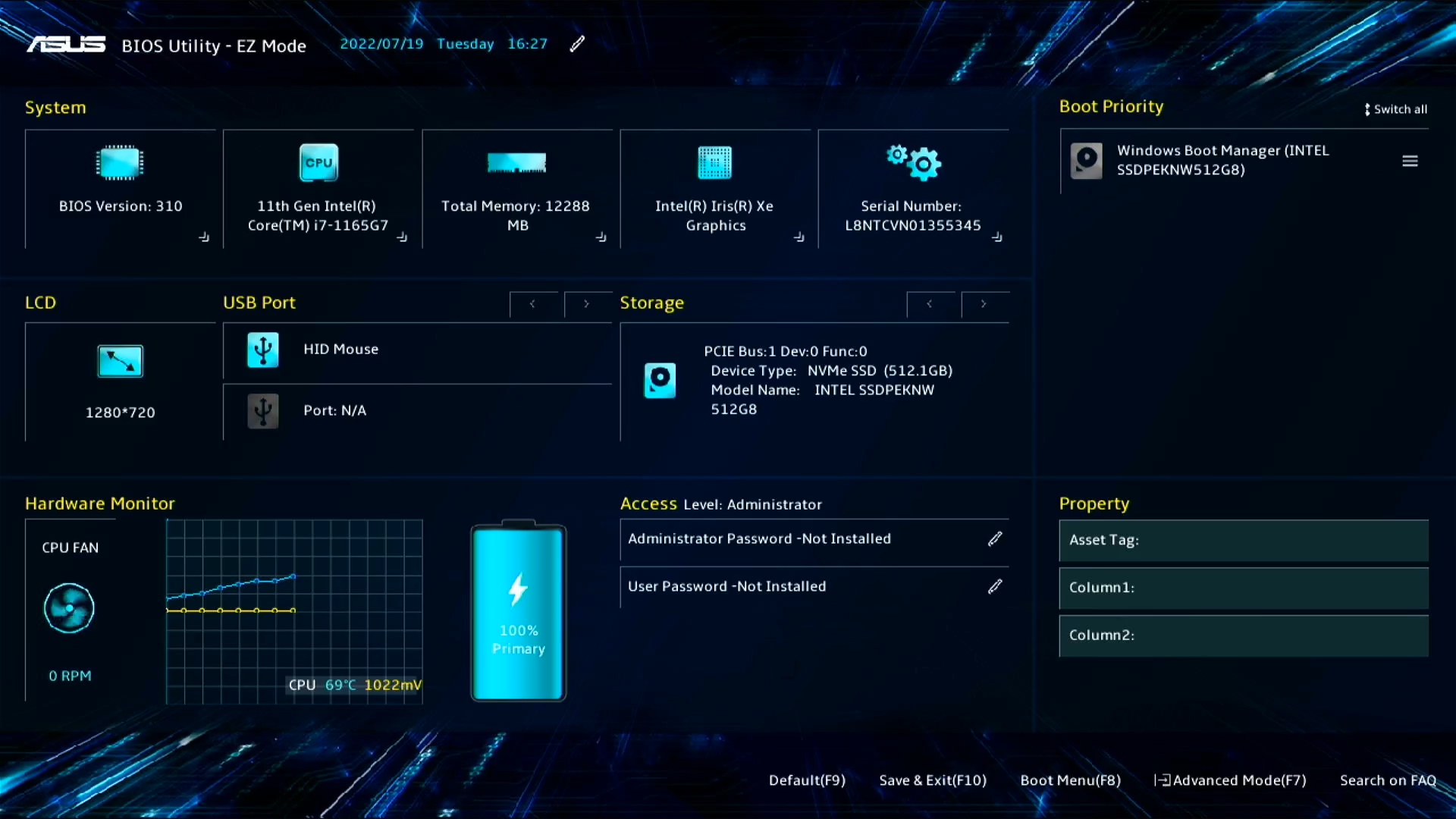- Article History
- Subscribe to RSS Feed
- Mark as New
- Mark as Read
- Bookmark
- Subscribe
- Printer Friendly Page
- Report Inappropriate Content
on
01-29-2024
04:28 PM
- edited
Sunday
by
![]() ZenBot
ZenBot
[Notebook/Desktop/AIO] Troubleshooting - Computer directly enters BIOS Utility/Aptio Setup Utility after power on
If you experience that the computer directly enters BIOS Utility or Aptio Setup Utility rather than Operating System after power on, please refer to the following troubleshooting steps.
The BIOS screen displays various system information of your computer, such as the CPU model, memory size, product serial number, disk type, and storage capacity.
To provide you more detailed instruction, you can also click ASUS YouTube video link below to know more about How to fix Computer directly enters BIOS configuration after power on.
https://www.youtube.com/watch?v=VyOA2FFMafA
Remove accessories and update BIOS
- Remove the accessories, such as external hard drives, printers, memory cards, CD/DVDs, dongles, etc.
- Update BIOS to the latest version. Here you can learn more about How to use EZ Flash to update the BIOS version. (For desktop products, please refer to ASUS Motherboard EZ Flash 3 Introduction.)
Note: Please use another PC to search and download the BIOS on the ASUS support site for the defective model, then copy the BIOS into a USB drive. If you have no other PCs, USB drives, or the BIOS has been updated to date, please ignore this step.
Confirm the settings in BIOS
There are two kinds of BIOS screen which are UEFI mode and Legacy mode, please go to the corresponding instruction based on the current display on your computer and then refer to the following steps in order:
UEFI Mode (You can select and choose the item via Arrow Keys and Enter of keyboard, Touchpad or Mouse.)
- After entering the BIOS utility, press Hotkey[F7], or use the cursor to click [Advanced Mode]① that the screen displayed.
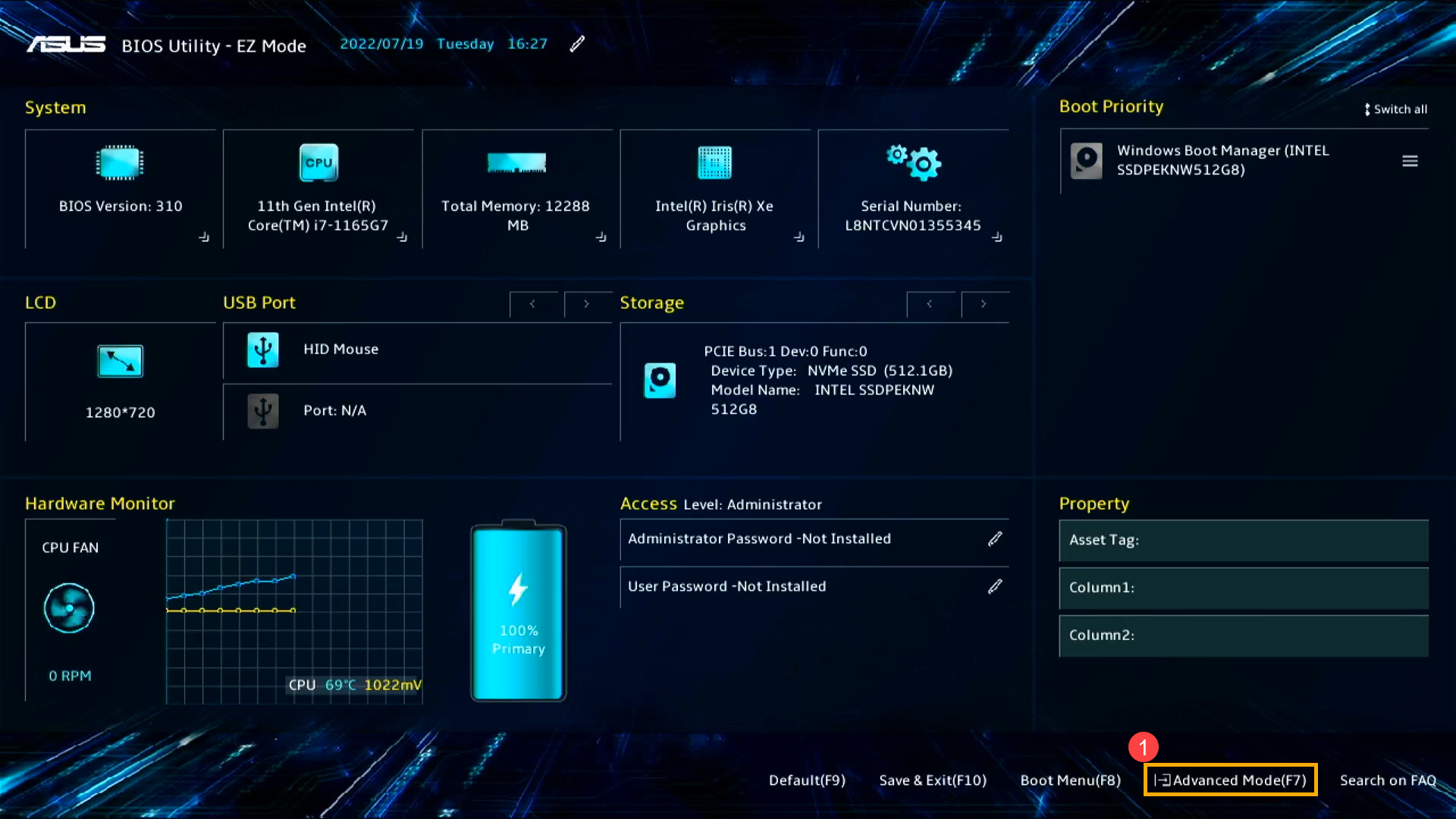

- Load BIOS optimized defaults. Go to [Save & Exit] screen②, then select [Restore Defaults] item③.
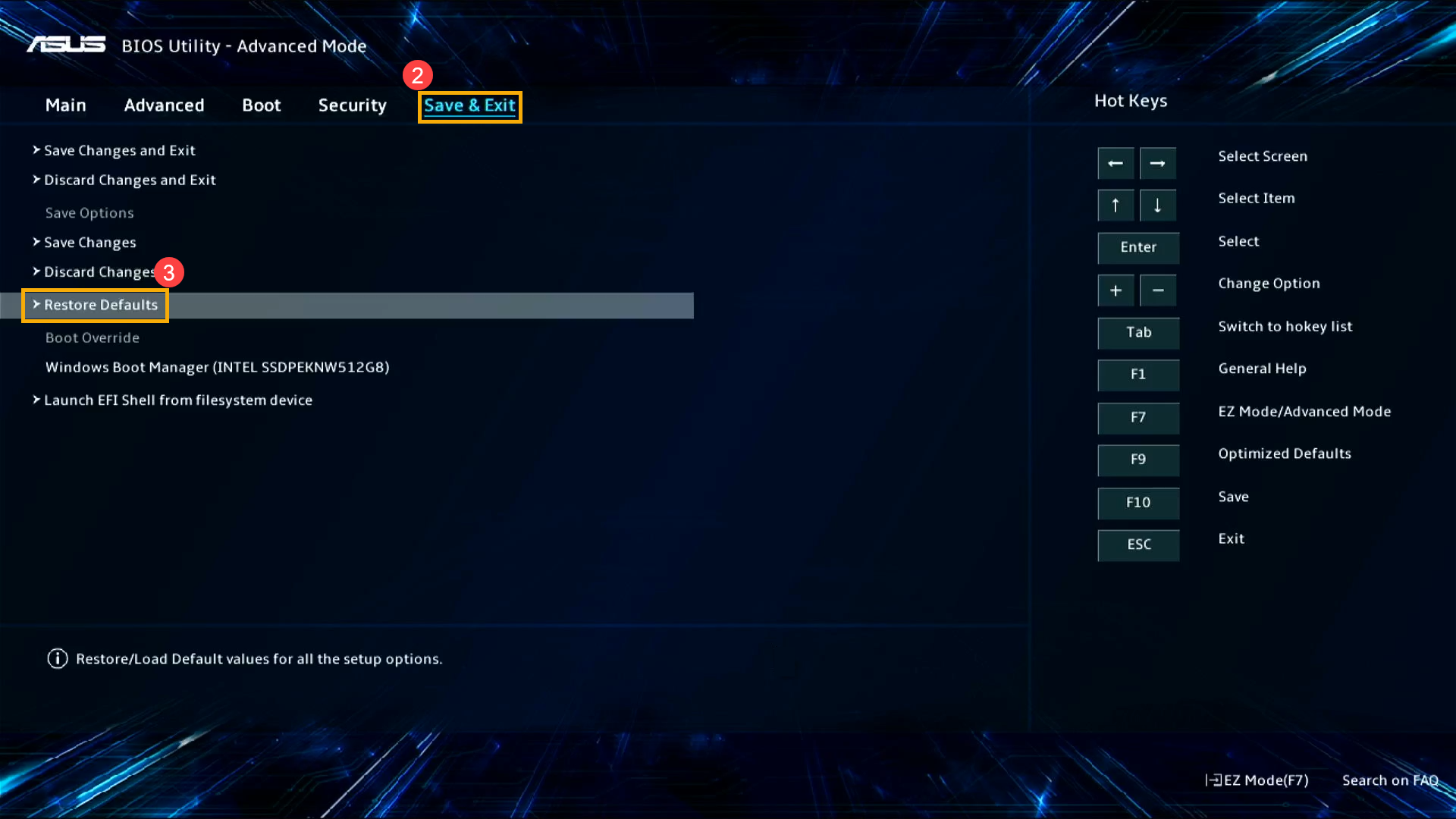
- Confirm whether to load the BIOS optimized defaults, select Ok and press [Enter] key, or use the cursor to click [Ok] that the screen displayed④.
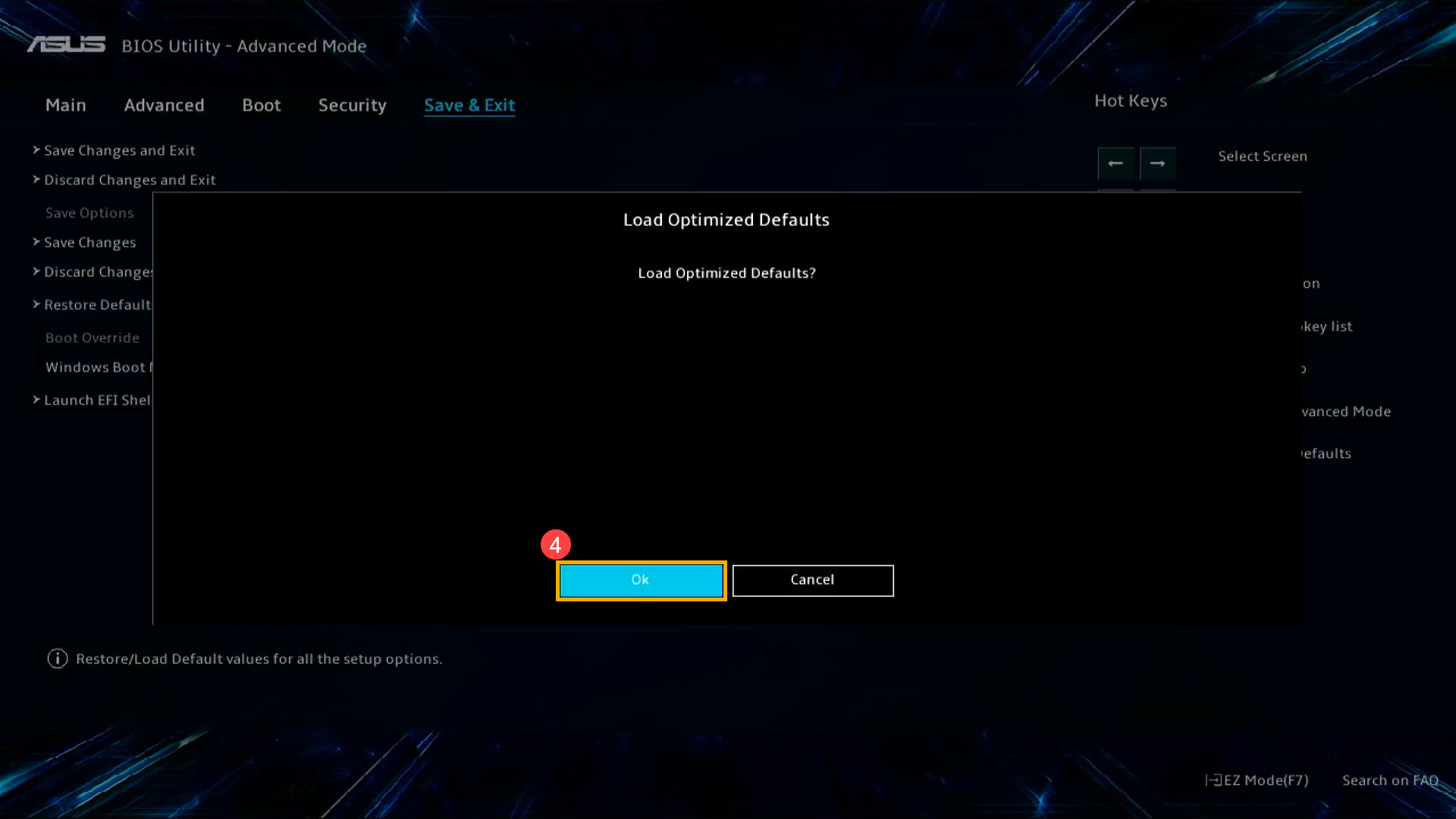
- Check whether the boot option is correct. Go to the [Boot] page⑤, find the [Boot Option #1]⑥, select the correct hard disk drive which has the operating system⑦.
Note: If there is no operating system installation file in your hard disk drive, please install it first. Here you can learn more about How to create and use installation media to reinstall Windows 11/10 via USB drive.
Note: If there is nothing in Boot Option, it means your computer cannot correctly detect any media storage. Please contact ASUS Product Support.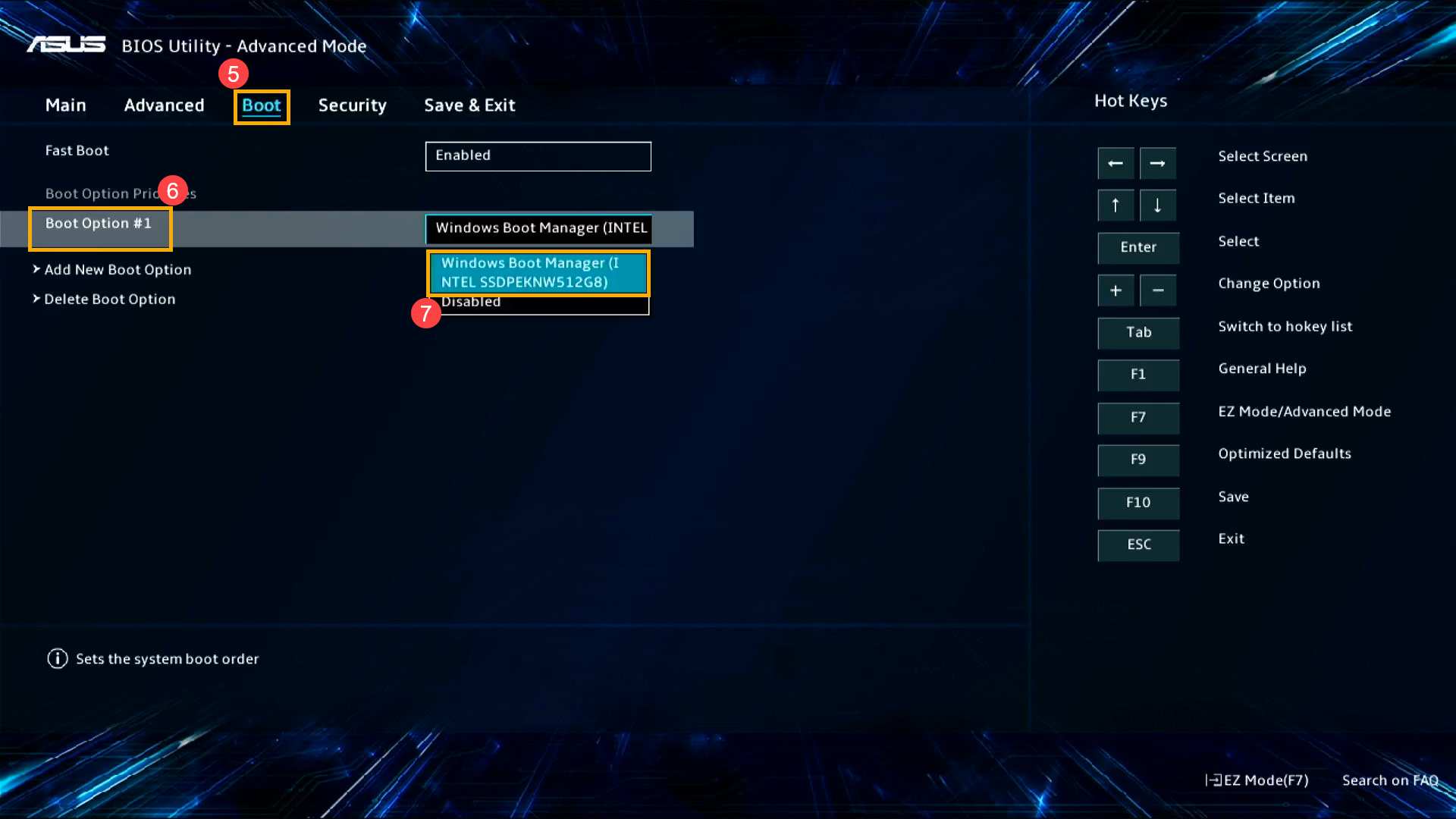
- Save & Exit Setup. Go to [Save & Exit] screen⑧, then select [Save Changes and Exit] item⑨.
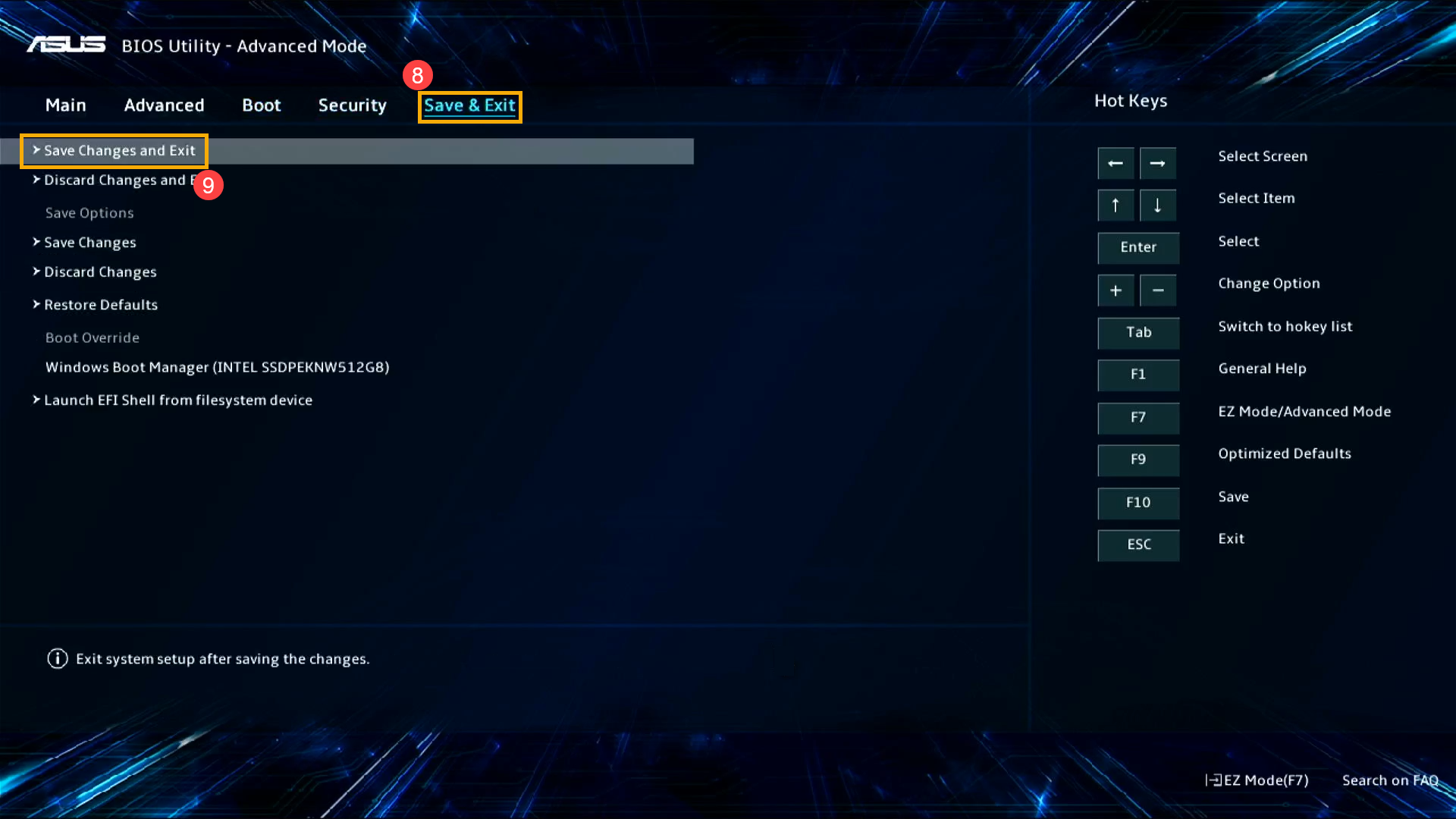
- Confirm whether to save and exit the BIOS configuration, select Ok and press [Enter] key, or use the cursor to click [Ok] that the screen displayed⑩.
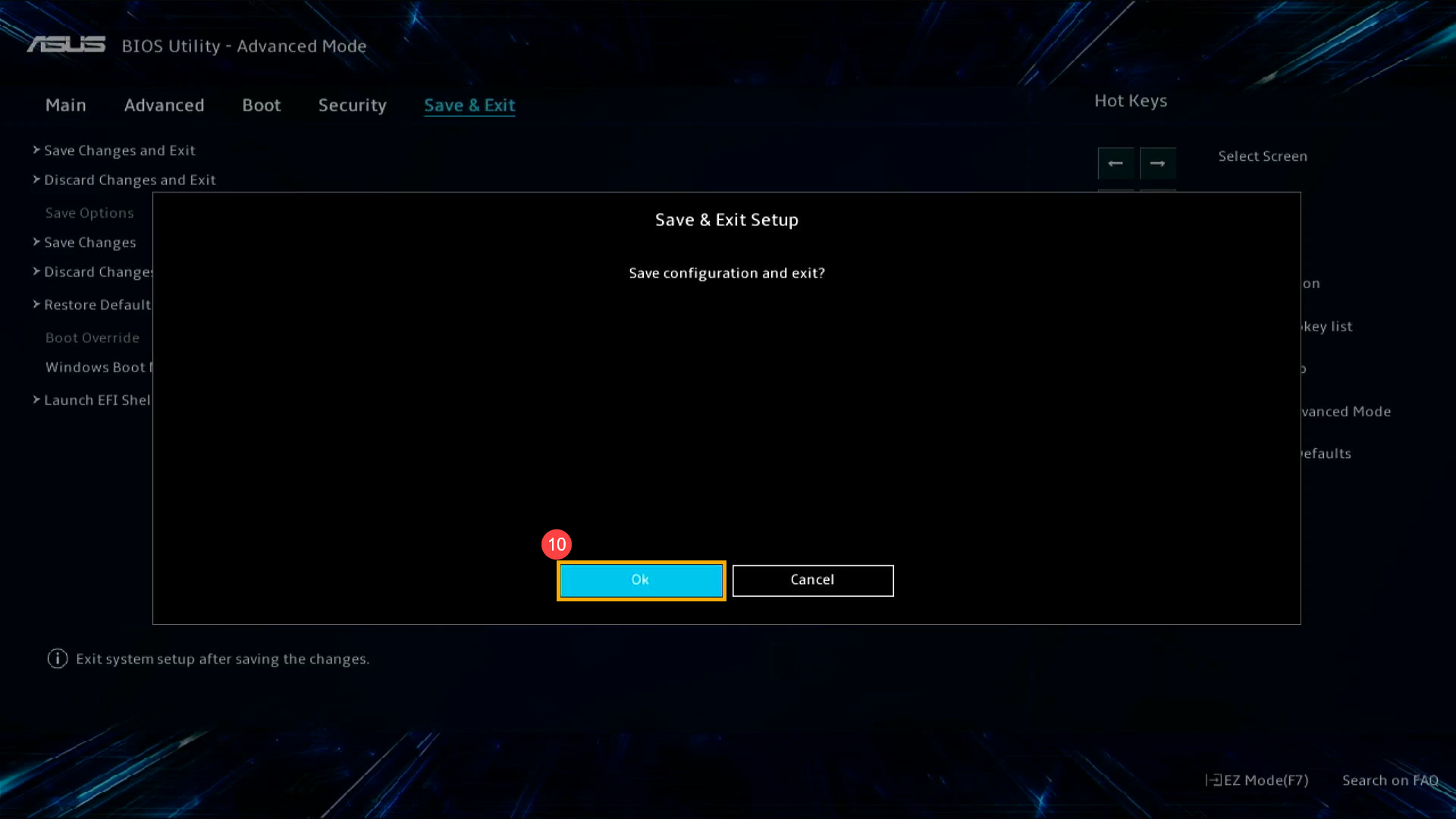
If your PC still cannot enter the Windows operating system after you adjust the BIOS settings, the operating system may encounter some issues. You are able to reset the system via Safe mode.
- Here you can learn more about How to enter the Safe mode.
- After entering the Safe mode, please backup your personal files, then reset the system. Here you can learn more about:
How to reset the system and remove all of my personal files
How to reset the system and keep my personal files
If your problem cannot be resolved with the above solution and information, please contact ASUS Product Support for further information.
Legacy Mode (You can select items by using Arrow Keys and Enter Key.)
- Enter the BIOS configuration.
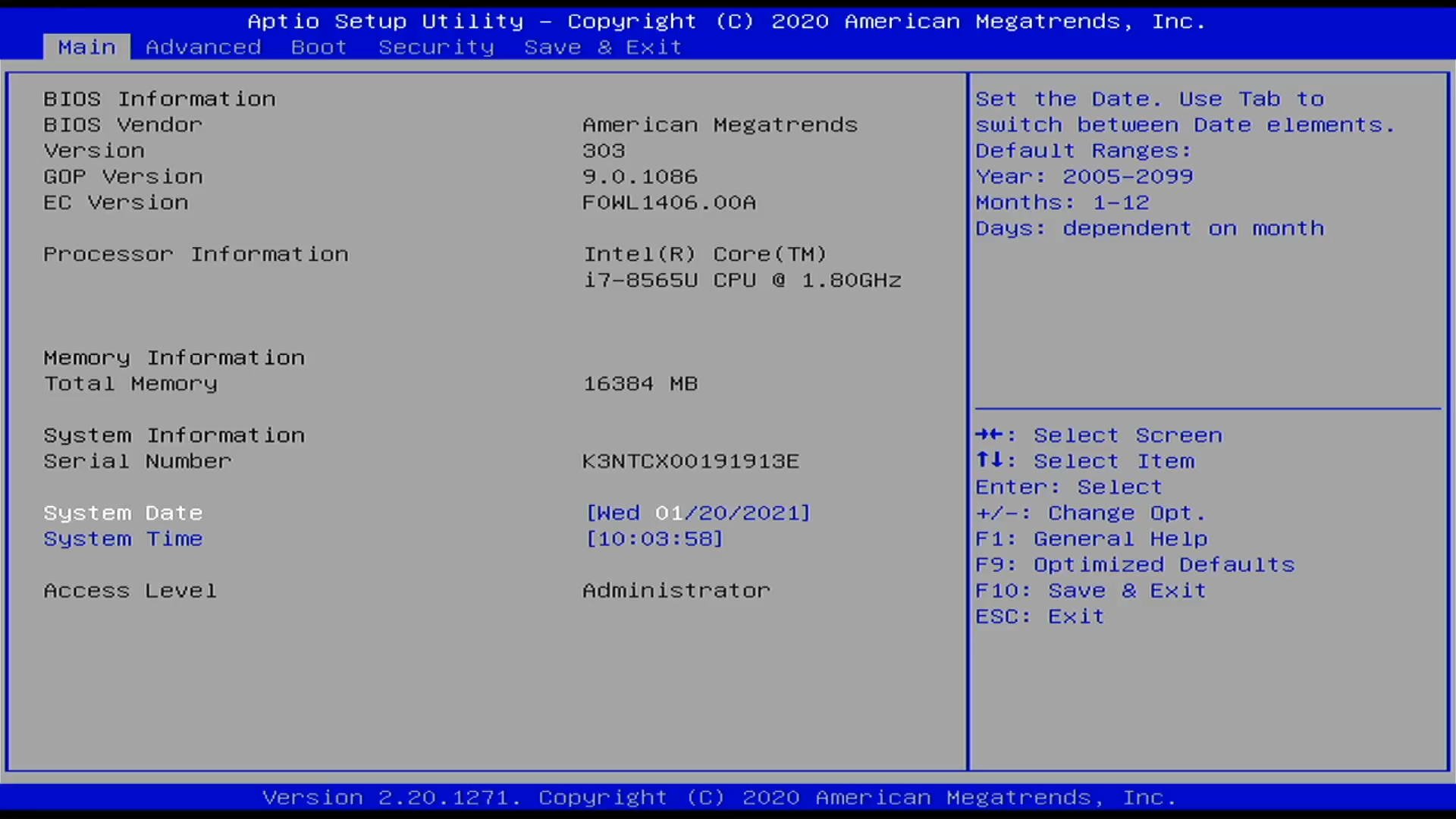
- Load BIOS optimized defaults. Go to [Save & Exit] screen①, select [Restore Defaults] item② and then select [Yes]③.
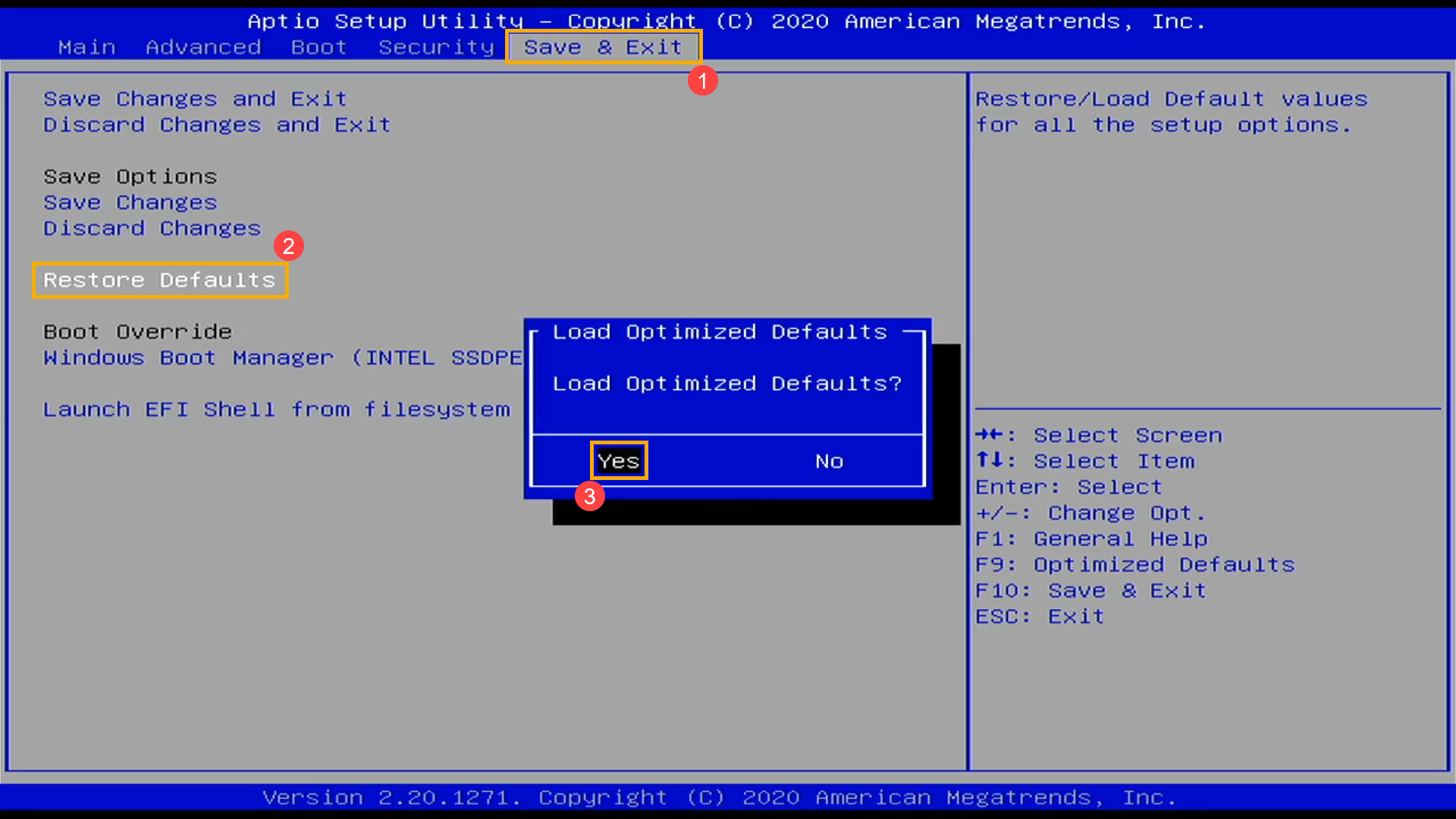
- Check whether the Boot option is correct. Go to the [Boot] page④, find the [Boot Option #1]⑤, select the correct hard disk drive which has the operating system⑥.
Note: If there is no operating system installation file in your hard disk drive, please install it first. Here you can learn more about How to create and use installation media to reinstall Windows 11/10 via USB drive.
Note: If there is nothing in Boot Option, it means your computer cannot correctly detect any media storage. Please contact ASUS Product Support.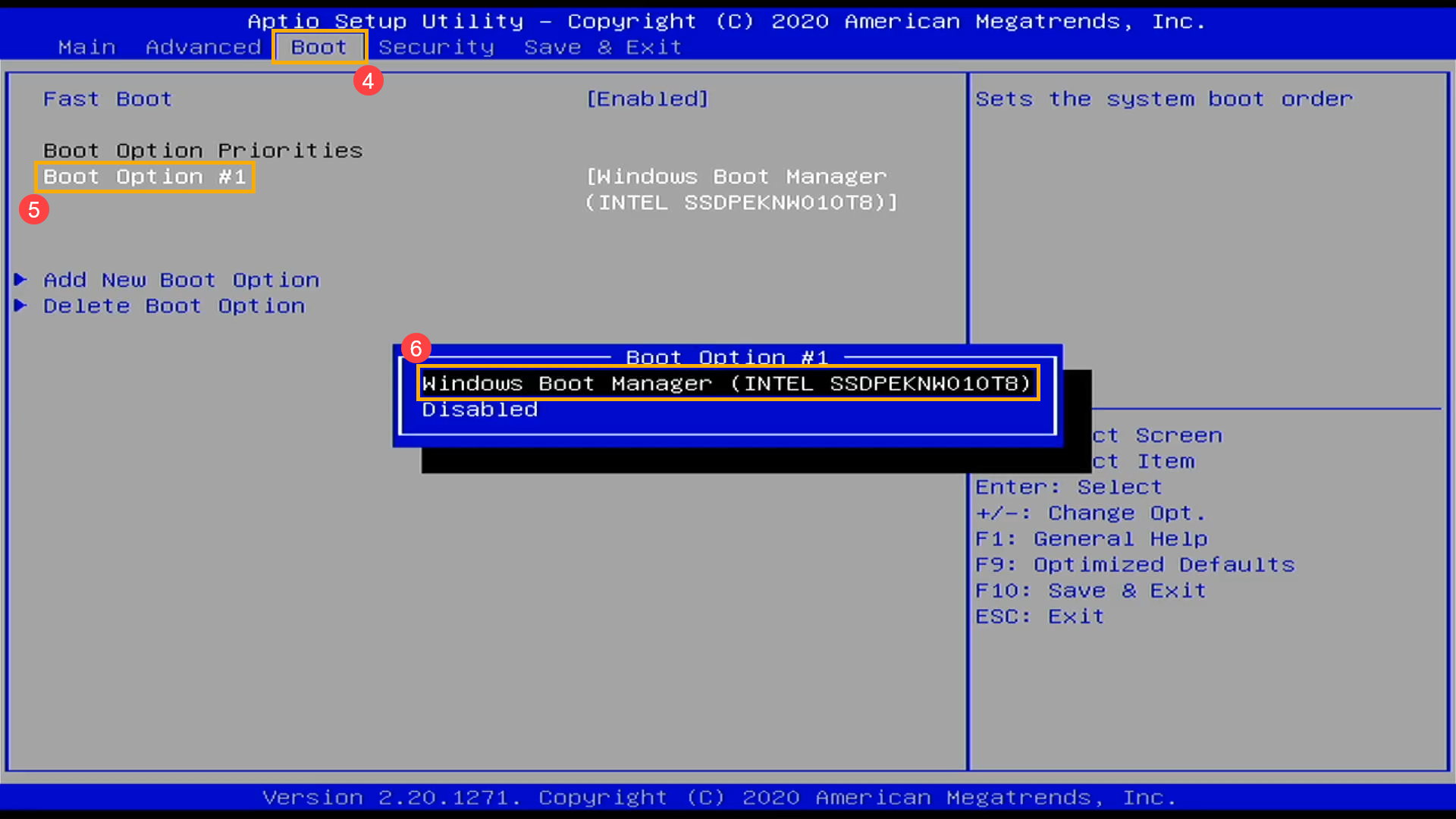
- Save & Exit Setup. Go to [Save & Exit] screen⑦, select [Save Changes and Exit] item⑧ and then select [Yes]⑨.
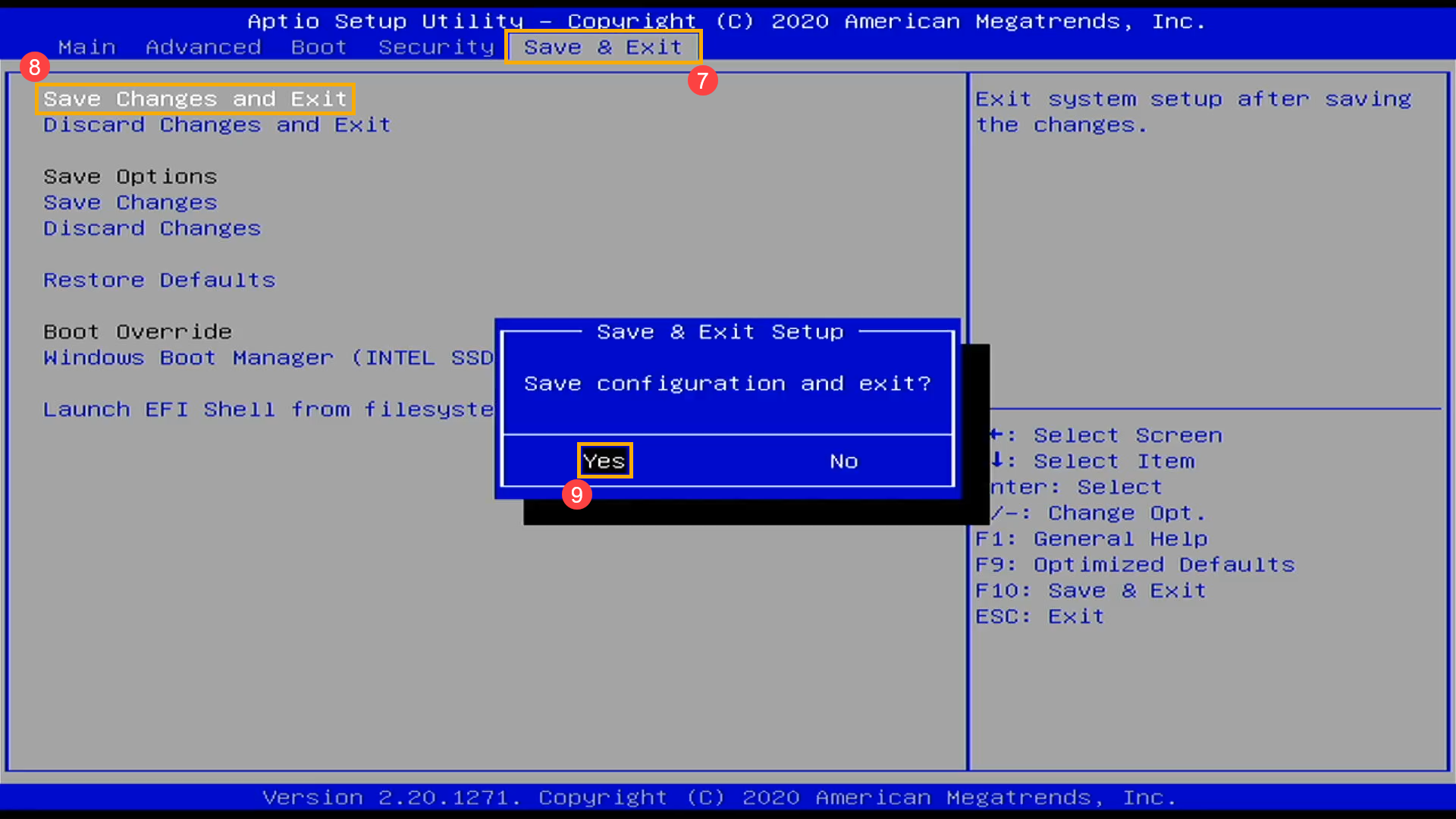
If your PC still cannot enter the Windows operating system after you adjust the BIOS settings, the operating system may encounter some issues. You are able to reset the system via Safe mode.
- Here you can learn more about How to enter the Safe mode.
- After entering the Safe mode, please backup your personal files, then reset the system. Here you can learn more about:
How to reset the system and remove all of my personal files
How to reset the system and keep my personal files
If your problem cannot be resolved with the above solution and information, please contact ASUS Product Support for further information.
